Our choice of Shakespearean drama as the focus for a major ModLab project was eminently practical: our partners at the Games Institute had a relationship with the Stratford Festival, and thus there was not only momentum but also a high-profile venue at hand. But as we began to design the game that would ultimately become Play the Knave, it became clear that Shakespeare’s dramas were well suited to our lab’s experimental methods for historical and conceptual reasons, not merely pragmatic ones. The theatrical content of Play the Knave was, in fact, integrally related to the working processes of our collaboratory, which were infused with the playful elements of Shakespearean theater.[1] This second act will narrate our process of research and development of Play the Knave to demonstrate the ways collaboratories use what performance scholars call “practice as research” (PaR). That said, we also make a case for refining that acronym, for, in our experience, this method may be more fittingly called play as research.
The centrality of play to practice-based research in the arts is, surprisingly, perhaps best appreciated by recognizing the conceptual links between theater and experimental science. Those links are explicitly evident in the workings of theater laboratories. Bryan Keith Browne, in A History of the Theater Laboratory, notes the importance of play to the experimental research methods of groups as seemingly different as the 1948 Cobra theater collaboration group and the Bohr Institute, which concluded conferences with satirical skits mocking the lab’s director Niels Bohr—earning the lab its reputation for the “Copenhagen spirit” that so influenced experimental theater–maker Jerzy Grotwski.[2] The playful techniques inherent to PaR, wherever it is practiced, not only facilitate knowledge production, but also open the collaboratory up to a greater range of contributors. This has been the case from the inception of laboratories. Although the term “laboratory” would, by the end of the seventeenth century, predominantly refer to the increasingly restrictive workshops of gentlemen natural philosophers and their expert colleagues, theater laboratories tap into an earlier history of laboratories that stretches back into the sixteenth century. These earlier laboratories—typically characterized by the presence of a furnace for chemical processes—were often inhabited by a diverse range of people, including women and others whose social status, ethnicity, or race would later limit their access to laboratory science.[3] Early laboratories welcomed just about anyone at home with embodied practices of discovery, and arguably their success as spaces of innovation was partly a function of that diversity.
At the time of creating Play the Knave, ModLab functioned in ways more reminiscent of the laboratories of Shakespeare’s age (albeit without the furnace) than the disciplined scientific laboratories of later centuries. As described in Act I, Play the Knave grew out of active collaboration among computer scientists and historians of science, historians of theater and theorists of performance, literary critics and cultural critics. These disparate fields meet, as we delightfully discovered, at the nexus of games and play. Play was not simply the subject of our co-production; it was instrumental to our methods of collaboration with each other and with the wider public that, as we shall describe, became part of our research. Our first ideas for Play the Knave answered a research question about what game format would best encapsulate our theory of theater and our understanding of Shakespeare. But over time, public installations and classroom adoptions of Play the Knave prompted our development of new features. As different audiences played with each set of new features, their experiences led to revisions, additional functions, and different research questions—all of which fed into further design decisions. This second act shows how our efforts as developers were directly impacted by the game’s players as they interacted with each other, with the game’s hardware and software, and with the audiences that watched these interactions.
Prior scholarship has indicated that collaborations in the sciences and collaborations in the arts are structured by similar principles, despite any differences of purpose.[4] But seeing the arts and sciences as comparable in this regard does not bring us closer to understanding how and why artists and scientists benefit from working with each other. The development of Play the Knave has offered a unique opportunity to explore how creative collaboration in the digital humanities is made possible by suturing the gap between the sciences and the arts. In exploring the collaboratory as a space of discovery for multiple fields that tend to be siloed from each other in universities, we hope to underscore the deep historical, theoretical, and pragmatic connections among the arts, the humanities, and the STEM-based disciplines—which are typically viewed as the sole sites of laboratory research.
Shakespeare’s plays, we maintain, present an ideal crucible for forging these connections. In their own day, Shakespeare’s plays were the products of collaborations between craftspersons and artists of all sorts, theater having been considered one of the “mechanical sciences” since at least the early twelfth century. Indeed, Henry Turner has shown that early modern playwrights such as Shakespeare were not much different from other practitioners of what he calls the “spatial arts,” including masons, carpenters, navigators, and surveyors, for all solved problems in their craft through practical geometry.[5] Although today Shakespeare’s plays tend to be studied in humanities and arts programs—and often in vastly different ways in different disciplines—in their own day the plays were integrally linked to science, technology, engineering, and math.
“Where we lay our scene” | Beginning to Play
In the fall of 2013 when we began creating Play the Knave, the ModLab was not yet a space that housed tables, chairs, monitors, overhead projectors, VR headsets, and personal computers. It was a loosely formed group of around twenty faculty members and graduate students from diverse sectors of the UC Davis campus—with the largest contingency coming from the humanities, so much so that we initially described ourselves as a “Humanities Innovation Lab.” While we were all interested in questions of what a laboratory is, how a laboratory works, and what would it mean in practice for humanists and scientists to do laboratory research together, the thing that focused all of our questions and united us as a group was a fascination with and investment in games.
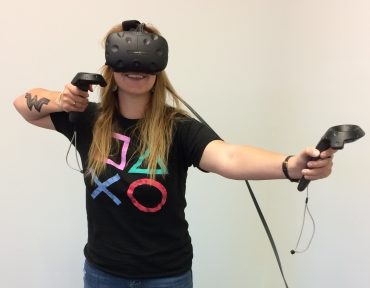
To be sure, we came to games with different research agendas. Some of us were computer scientists interested in using games to solve problems in the development of motion-capture systems. Some of us were scholars of drama and theater history who were interested in the connections between games and embodied performance. Some of us were historians of science and technology, interested in how games spur scientific discovery. Some of us were media scholars, interested in video games as media forms with escalating cultural significance. Once per week, we all sat around a long table for lunch to talk about projects the lab might take up as a collective, an enactment of the “truly open meeting place” culture for which Patrik Svensson advocates in Big Digital Humanities. These open discussions grew more focused, more pragmatic, once a possible partnership with or at least an audience at Canada’s premiere theater for Shakespeare performance was put on the table. And so, gradually, our weekly meetings turned into brainstorming sessions about what sort of Shakespeare game we wanted to make.
The design of Play the Knave was a patchwork of the multiple kinds of expertise in the room and the improvisatory method with which we shared that expertise, building on each other’s ideas. As the theorist of collaboration Vera John-Steiner writes, creative collaborations require that a group have a “shared vision,” but the most transformative and cutting-edge ideas emerge when collaborators also have “multiple perspectives, complementarity in skills and training, and fascination with one’s partner’s contributions.”[6] As we built up the idea for Play the Knave, this diversity of perspective, complementarity of skills, and mutual respect was critical because none of us alone had all the skills required to make a Shakespeare video game. Bloom, for instance, had virtually no experience with video games as a cultural form, though she was a specialist in Shakespeare. At the time the ModLab was forming, Bloom had been doing research on historical connections between Shakespearean theater and games, and she felt strongly that this game would need to capture something of the experience of making theater. She had been doing research on game adaptations of Shakespeare and was troubled by the fact that most Shakespeare-themed games were trivia-based, conveying nothing of the material conditions of early modern performance.[7] In Shakespeare’s day, the plays were not simply texts to be experienced on the page; for their original audiences, they were social events brought into being through a collaboration between actors, seamstresses, stage architecture, musicians, and numerous other entities that operated independently of the playwright.
Bloom, who was already thinking toward educational applications, also saw the game as an opportunity to address the dearth of interesting content in games that elementary school students play to develop computer literacy. One of these computer games, Make a Pumpkin (2007, ABCya!), was the impetus for the modular design of Play the Knave.[8] Make a Pumpkin tasks players to design a jack-o’-lantern by selecting assets (mouth, nose, eyes, hat) from a menu of options, placing them on the virtual pumpkin, and then clicking a button to animate the creation. Was it possible, Bloom asked the group, to switch out pumpkin assets for theater assets, so that instead of building a silly squash, kids could experience through a computer game what it is like to create a theatrical scene from Shakespeare?
Had the group been dominated by Shakespeareans, it is entirely possible that Play the Knave would have remained an elaborate spin-off of Make a Pumpkin. Fortunately, as each participant in the lab conversation introduced ideas based on their expertise, the theater-qua-pumpkin idea morphed into a richer game concept. For, although some around the table had minimal knowledge about Shakespeare and theater, they knew a lot about designing and playing video games. Fairly quickly, our conversations turned to considering how a game about Shakespearean theater could use virtual-reality technology to convey the experience of theater-making. One of the members of the ModLab, Oliver Kreylos, was one of the first researchers to hack Microsoft’s Kinect camera, making it possible for game makers and scientists to use the Kinect for all sorts of projects that Microsoft never dreamed of.[9] So, we wondered, might we use Kinect technology for our game? Toothman, who was part of a motion-capture research lab run by another ModLab member, Michael Neff, had just the kind of training we needed to test out this idea. Could we use Kinect’s motion-tracking system to turn our players physically into actors in the scenes they were creating? The Kinect technology made it possible for our game to communicate our argument about theater not simply through the game’s narrative elements, but also through the mechanics of play. The game’s mechanics would be an integral part of the narrative it told about Shakespearean theater.
We describe Knave’s initial ideation for several reasons, all of which help to define key aspects of the postdisciplinary collaboratory. First, it is important to document the inception of collaborative digital media projects and details about the labor of all actors, including human researchers and nonhuman technologies. Though many humanists are curious about expanding their work into digital applications, taking on digital humanities (DH) projects can seem incredibly daunting to those who have not been trained in DH methods and theory. Most traditionally trained humanists cannot simply look at a DH project and know what is inside the black box of its design. To be sure, even traditional text publications do not display all the work that went into creating them in terms of research, writing, and editing; however, since any reasonably good Ph.D. program trains its students in traditional text publication, most humanists in the academy have some sense of what happens before a publication is released to the public. In particular, most humanists have been trained to understand how the practical labor of creating a publication intersects with the theory and concepts they want to get across. That is, humanists have been trained to write about an idea when they have it, or at least to think through the act of writing; they know how thinking and making intersect to create a scholarly text publication. As the early modernists and digital humanists John Hunter, Katherine Faull, and Diane Jakacki remind us, insofar as critical thinking is essential to digital humanities making, DH work is not ontologically different from traditional humanist practices.[10] That said, the labor of making is completely different, and almost nothing in graduate school trains a traditional humanist for this kind of labor. It involves multiple actors with different competencies working together to articulate, test, and refine ideas, playing off each other, and, as we’ll discuss further below, playing off the experiential knowledge that each of them brings to the project.
A second reason we tell this narrative of our early beginnings is to underscore how the project was motivated by inquiries concerning Shakespeare, and how those inquiries led us toward the Kinect camera. We did not begin by asking, “what kind of virtual-reality experience can we make about Shakespeare?” We began by asking what kind of game would best express the ideas about Shakespeare that we wanted the audiences at the Stratford Festival to encounter. Perhaps far more often than many DH scholars might openly admit, technological tools play an outsized role in project design: we have this material (software, hardware, training, system, etc.), so what can we do with it? Video games are particularly vulnerable to this approach because game-making has become so much easier for novices due to game-making toolkits like Scratch, and also because there are so many enticing devices and systems out there to be used, VR being only the latest exciting frontier. From the beginning, the ModLab advocated a more open-ended, concept-driven approach to game-making. The result, as we’ll detail further below, was a complete entanglement of theory and practice, thinking and doing, among an assemblage of collaborators.[11]
This leads to a third point: the spirit of exchange and exploration that characterized our group’s working process. Our disparate and even unrelated research questions evolved and shifted as we went deeper into the design process. The idea of a game that could capture the material conditions of theatrical production led to research questions about Kinect’s affordances as a motion-capture tool. Conversely, as we considered these affordances, new research questions arose about the material conditions of theatrical production. For instance, one of our early (and ongoing) discussions was about how much and what sort of control over the avatars players would have. As we discuss in more technical detail in Act IV, the Kinect v1 could capture twenty skeletal joints from a moving human body, but it could not detect facial expressions or finger articulations; players could therefore not control the faces or hands of their avatars. If our aim was to simulate something like stage acting, how critical, we wondered, were the face and hands? This question led us to consider alternatives to the Kinect, such as facial-recognition applications that could run on a smartphone. Such applications would have potentially enabled our game to focus on players’ faces and capture minute fluctuations of expressivity. So, we momentarily considered designing a game in which the player would deliver Shakespeare’s monologues, their facial expressions animating the face of an avatar on screen. But the trade-off quickly became evident: our game could either zoom in on the player’s face or telescope out to focus on the full body, but it could not do both—at least, not if using off-the-shelf hardware.
The choice to focus on the body at the expense of the face and hands was motivated predominantly by our answers to our emerging research question about the role of the face and hands in theatrical performance. To simulate theatrical acting, we decided that the motion of the actor’s limbs and torso was more important than articulation in the face and hands, particularly if player-actors were interacting with each other via dialogue. We could never have anticipated where this set of research questions would ultimately take us. It was only when we installed a prototype of the game in the lobby of Stratford’s Festival Theatre—an experimental setup that allowed us to repeatedly observe how players performed Shakespeare when they interacted with our gaming system—that we recognized some surprising connections between digital acting in the game and the longer history of Shakespeare performance.
“Actions that a man might play” | Playful Research
When an early version of Play the Knave was installed for a few months in the summer of 2015 at the Stratford Festival, we began to see how players would help produce and refine our research questions—as collaborators. However, this was not our initial intention. We initially viewed these players as the game’s users and, therefore, our research subjects. Offered as a lobby attraction for audiences attending performances of Shakespeare’s comedy Much Ado About Nothing, our early prototype allowed players to input their email addresses so that they could receive a video of their onscreen performance as a souvenir afterward. Players consented to a waiver that permitted us to use the anonymized Kinect data captured by the game (skeletal movements and audio streams) as well as the rendered performance videos for research purposes.
The Stratford Festival version of the game offered just one scene of Benedick and Beatrice bantering, with the avatars pre-selected and placed onto a 3D model of the Stratford Festival Stage. Play the Knave was available to theater patrons before the show and during the intermission, with a theater usher managing the queue of interested players. A trailer video created by Jason Clarke, the Festival’s digital media producer at the time, played silently in an endless loop on several television monitors in the lobby, helping to inform patrons about the gaming opportunity available to them at the theater.
For the first month of the installation, Sawyer Kemp—then a UC Davis graduate student, now a professor of English at Queens College, City University of New York—remained in residence in Stratford to watch the public responses, gathering field notes and reporting their observations back to the rest of our team. With no menu system to give players a choice of avatar, script, stage, or sound—key game features that would only be added later—the minimalist version of Play the Knave set before the Stratford audiences allowed us to control variables and examine fundamental dynamics of interaction between the gaming system and players: their reading of the karaoke script and their engagement with the avatars. Thus, the Stratford Festival became an experimental field site, an outpost of our laboratory.
From watching players at Stratford, we made two surprising findings that generated new knowledge about Shakespeare, digital culture, and the history of performance. First, we found that Kinect’s motion-capture technology rewards players who use large, histrionic gestures. Although players differ in the quantity and quality of their gestures, expressive players almost inevitably end up using exaggerated movements that recall the declamatory style developed by ancient rhetoricians like Quintilian, and that was sometimes deployed in early modern theaters. Regardless of their experience with acting, players discover quickly that broad exhibitionism, including momentarily freezing a grand gesture for effect, simply gets a more interesting response from the avatars. Although the game invites users to conceive of themselves as puppeteers of their avatars, in fact, the digital system also puppets the players, provoking a particular acting style.[12] Players’ responses open up an intriguing wormhole in the history of early modern acting.[13] If a digital game can produce in players something that resembles early declamatory acting, there would seem to be something inherently digital about that acting style.[14] Declamatory acting could be described as a “digital” style of acting: discrete and repeatable gestural equivalents serve as abstractions of categorical feelings or states, rendering in quantized form otherwise fluid, ambiguous emotions or continuous variations of character.

The emergence of declamatory gestures in the game was particularly worth investigating in light of the second of our research findings: when people play, they tend to gather a crowd of onlookers who watch the performances both of the digital avatars on screen and of the human bodies in the ambient space where the game is installed. Onlookers, many of whom decide not to play themselves because they claim to lack expertise in gaming or acting, nevertheless become actively involved in the play session, even offering criticism and advice to players in an effort to improve their onscreen and offscreen performances. Consciously or not, these onlookers come to constitute a theatrical audience, one that differs markedly from the quiet, largely passive audiences found in most Shakespearean theaters today and instead resembles the more vocal crowds who attended Shakespeare’s plays when they were originally performed.
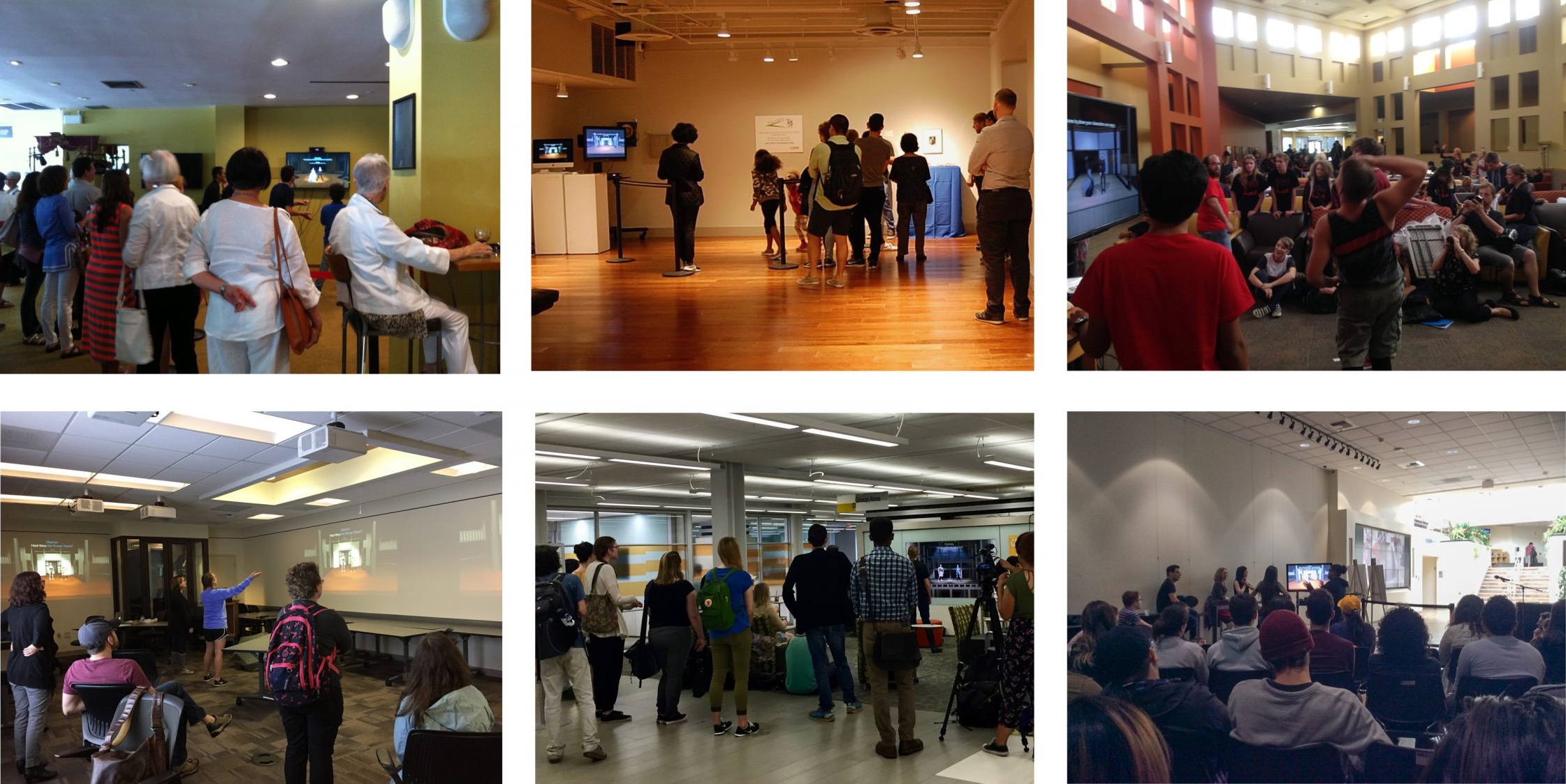
At most public installations, Play the Knave’s audiences are neither quiet nor passive. They remark on the ongoing performance, sometimes calling out ideas, jokes, or encouragements to the players. Based on these discoveries made at the Stratford Festival, we determined that Play the Knave, in leveraging digital game technologies to open up Shakespeare performance to amateur actors, also prompts forms of audience participation harkening back to those found in early modern theaters. Just as the declamatory style may have functioned in the early modern theater as a sign of, and a means for, amateur performance, so this style can facilitate and mediate communal, collaborative Shakespearean theater today, developing new pleasures and competencies in Shakespeare performance in a wider public that often tends to view Shakespeare as elitist.[15]
These insights and discoveries serendipitously changed our perspectives about our own model of research. We had come to the Stratford Festival thinking of it as a field site where we would gather data about public responses to our game, which we hoped would lead to new inferences about early modern theater history and about theatrical performance in the digital age. But, as we realized in retrospect, this model of research oversimplified the process of knowledge production in which we, as a collaboratory, engaged. For it did not anticipate the role of Stratford audiences in generating and actively shaping that knowledge. Stratford audiences who played our game or watched others play were not just research subjects—guinea pigs on whom we tested our ideas. Nor were they simply consumers of our software. Rather, they were actually members of our collaboratory, crafting knowledge as they interacted with the gaming system and with each other.
Richard Lane argues that collaboratories instantiate what Michael Gibbons and colleagues call “Mode 2” knowledge production.[16] In Mode 1 knowledge production, “problems are set and solved in a context governed by the, largely academic, interests of a specific community,” whereas “Mode 2 knowledge is carried out in a context of application.”[17] As players who tried out our game at Stratford interacted with the Kinect motion-capture camera and our software, they made discoveries. Some of these discoveries might be categorized under the umbrella of “learning” that is typical of Mode 1 knowledge. For instance, by performing the parts of Beatrice and Benedick, players learned more about the main characters of the drama they would encounter in the Stratford Festival’s production of Much Ado about Nothing. Players could experience for themselves the give-and-take structure of comedic dialogue and could begin to consider the erotic friction between couples in this romantic comedy. Players were also learning what it is like to be an actor in a theater, thus putting themselves directly in the position of the actors they were watching on Stratford’s stage. And whether they played the game before onlookers or watched others play, they were learning about the important synergy between actors and audiences. Such forms of learning might be interpreted as more Mode 1 knowledge creation: Play the Knave educated Stratford audiences about the play they were seeing and about the theater they were attending, as if our academic team’s knowledge were hierarchically trickling down to players.
But other discoveries were far more heterarchical and characteristic of Mode 2 knowledge. As noted above, players discovered through the act of play that to get a good performance out of the avatars and, thus, to please the crowd of onlookers gathered around them, they needed to use large, declamatory gestures. Our game didn’t provide models of actors gesturing in this way—in fact, we strongly resisted some colleagues’ recommendations that we offer prescriptive models for player movement in the typical way of Kinect-based dance games, such as Just Dance (2009, Ubisoft) and Dance Central (2010, Harmonix). We wanted players to play with the system and figure out what sort of acting style worked best for them. Those who discovered the declamatory style of acting did so because they were collaborating with the digital system, negotiating with its limitations and affordances in an effort to get their avatars to produce seamless, realistic, or entertaining movements.
As Stratford players collaborated with their avatars, they also generated knowledge that shaped our game’s further development and our own research questions about the game as a technical object. In this sense, the players at Stratford were not simply recipients of our game but actors in our actor-network, and our installation was more than an act of community outreach. Gabriele Griffin and Matt Steven Hayler warn against the language of “outreach” to describe the relationship between digital humanities projects and the general public that uses them. The assumption in an outreach model is that there is no feedback between developers and the public, for the latter interact only with a thing that the developers have created. Like Griffin and Hayler, we would maintain that there was actually a rich collaboration between Stratford players and our research team, a collaboration “mediated by the secondary and simultaneous human-machine/material interaction rather than wholly replaced by it.”[18] As Stratford patrons played, they became co-producers of the game they were playing. To be sure, our Stratford prototype was a “rhetorical object” that made an argument, but to call that argument “ours” shortchanges the significance of the public’s engagement with our software.[19] By interacting with and sometimes pushing against our game system, players and audiences at Stratford honed our research questions, shaping not only the game’s continued design but also the issues we would explore with future players at other installations to come.
Having seen the benefits at Stratford of widening the boundaries of our collaboratory, we scaled up considerably over the next few years. We added dozens of undergraduate student interns and several more graduate student research assistants to our porous team of makers, including individuals beyond our university. Colleagues in the Shakespearean theater community, for example, contributed additional 3D models of theater stages for the game.

A small group of undergraduate students, most of whom had signed up as ModLab interns after learning about Play the Knave in one of Bloom’s classes, helped us build sound files that players could select as extradiegetic music or diegetic sound effects. One student, Cheryl Choo, combed the internet for free, open-source sounds that could then be layered on top of each other to create extradiegetic sound effects, such as a storm, a summer’s night, or a battle. Another student, Mira Pranav, recruited and collaborated with a fellow undergraduate from the UC Davis music community, Ziad Asadi, to create original compositions of diegetic music that could help set the mood of a scene, which resulted in scores including “Eerie,” “Despair,” and “Grand Speeches.”

Students who joined our team brought a range of skills that they had never applied to video-game production. For instance, Yasmine Hachimi, then a Ph.D. student in the UC Davis English Department, helped Bloom generate ideas for avatar costumes, which we would send to Byron Jennings—a 3D modeler whom Bloom had met serendipitously at a neighborhood picnic—so that he could create custom avatar skins from different historical periods to complement the avatar skins we purchased from online vendors. Hachimi, whose dissertation research focused on gender, sexuality, and popular representations of the Tudors, encouraged us to create a fuller-bodied female avatar as an option alongside the very slender avatars we had so far created or found for the game.
The Avatars of Play the Knave
Ancient
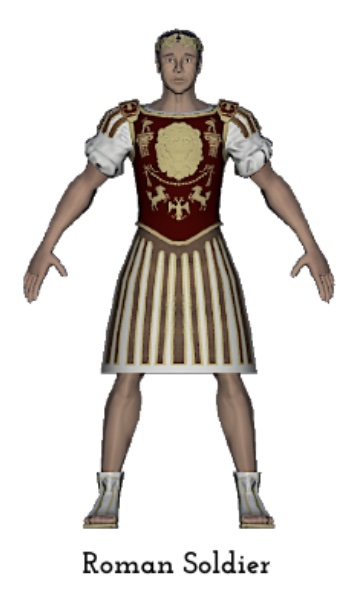

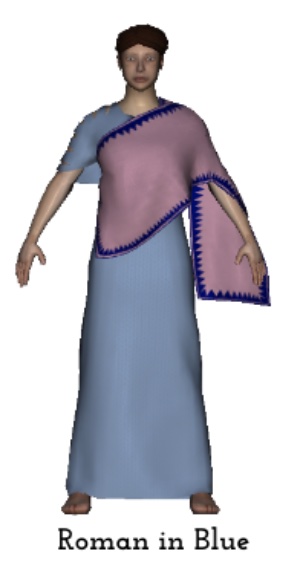


Fantasy & Science Fiction



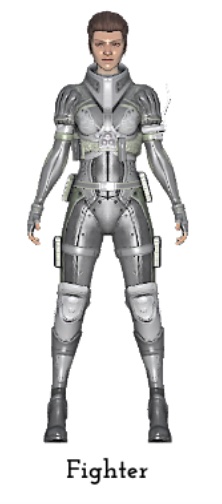

Tudor



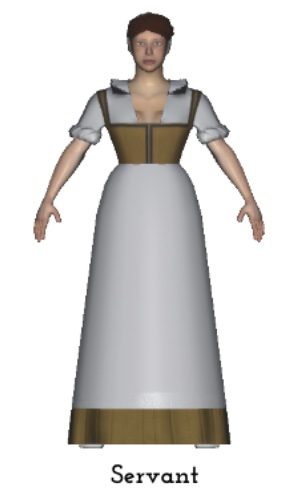
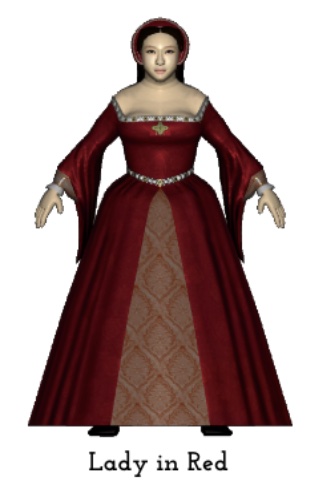

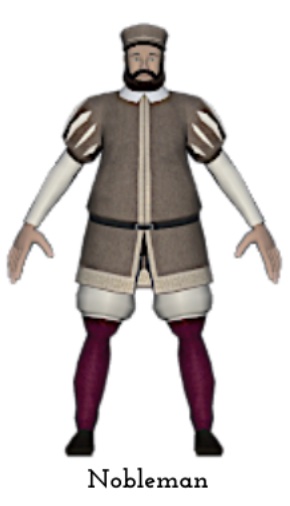


Modern










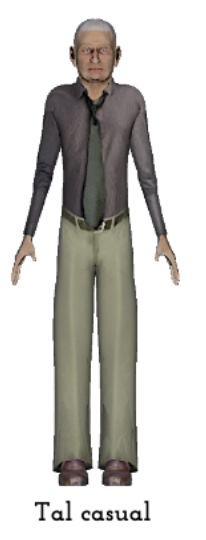








As new avatars, stages, and soundtracks were created, teams of undergraduate interns playtested each asset. Many of these playtesters overlapped with what was probably our largest group of collaborators on the UC Davis campus: the scriptwriting interns. Scriptwriting was a task that needed as many hands on deck as possible. Our goal for the game was to include options from twenty of Shakespeare’s plays, with at least two scenes for single players, several scenes for groups of three or four players, and at least four scenes from each included drama for two-player games. On the advice of Christine Sampson, then a PhD student in performance studies, each of these scenes would be offered in two versions of complexity: full (edited only minimally to ensure the scene was playable within the game context) and abridged (still Shakespeare’s language, but edited further to convey more efficiently the “story” of the scene, thereby making the game more suitable for younger players, those new to Shakespeare, or those with less time to spend on a game session). While Act III will provide a technical description of the software we used, modded, and developed to support our process of script generation, we offer below a glimpse of what this collaborative process looked like from the perspective of our human actors, which included a large and evolving team of humanities students.
Creating these hundreds of game scenes required that students had a firm understanding of Shakespearean drama. First, the interns read each Shakespeare play to figure out which scenes were suitable for one, two, three, or four players. Next, they edited those scenes so that the game script conveyed key dramatic conflicts in a few minutes of playtime and in both versions of complexity. The interns then figured out the length of time each line of dialogue should stay on screen before the next line appeared for players to read—a process that had to be done three times, once for each of the reading speeds the game offered. Finally, the interns playtested all the scenes to ensure the karaoke timing worked and to catch typos, errors, and inconsistencies. Playtesting these hundreds of scenes was so time-consuming that we created a satellite ModLab room on campus that, containing much less expensive equipment than our main alarm-protected space, could be accessed more easily by undergraduate students. In the first three years of our development process, over 75 students interned with the project, usually receiving course credit for their work. Many more would contribute in the years that followed. (For a list of students involved in the project, see the Appendix.)
In labeling these student interns as actors in our actor-network, collaborators in our collaboratory, we are not simply being generous or complying with best practices for giving credit to contributors. Our scriptwriting and playtesting interns fully exemplified the play-based methods of research that have shaped our entire game-design process. Their playtesting did not simply contribute to building up the game’s assets; it also generated new knowledge about the relationship between Shakespeare texts, editorial theory, and performance.
Many of these research discoveries emerged out of student interns’ collaborations with the software we had available for creating playable scripts. As will be explained in more technical detail in Act III, the software we used to create our karaoke texts took the form of a TXT file marked up with HTML code, and this could be edited directly to make changes to the script text and timing. Timing was our biggest challenge. When we playtested a scene, we might discover that a particular line needed more time for its selected reading speed, say, two seconds longer. This was easy enough to fix in the HTML code for that line of text, but once that line’s timing had been adjusted, every subsequent line’s starting and ending times would have to be adjusted by two seconds. In the early phases of design, when we had just a few Shakespeare scenes, this process was cumbersome but doable. However, when we had twenty plays, with two dozen scenes apiece, retiming became something of a nightmare. Our playtesters helped us realize that we needed some sort of system to easily edit and generate files that could be playtested on demand, fixed quickly, and retested until they were satisfactory. The idea of the Mekanimator Scriptmaker developed as a resolution to this problem. Ultimately, Mekanimator Scriptmaker would allow anyone with an internet connection to create a karaoke script that could be uploaded and played within the game, an innovation that exponentially increased the number of people who could—and ultimately did—collaborate with our game system. But we could have never known that this would be the outcome when we started developing Scriptmaker. As is true of all improvisatory creations, the meaning of ideas tends to emerge only in retrospect.[20]
A more technical narrative of Scriptmaker’s development will be provided in Act III, but the fuller plot, including its many human actors, is worth telling because it showcases how our improvisatory game-making practice functioned as experimental research, which then fed back into game design, which fueled further research. The purpose of the first version of Scriptmaker was to streamline the process of creating and editing game scripts. With Scriptmaker, the user or “scriptwriter” would first input lines from Shakespeare and assign them either to a “character” or to “stage directions.” Using a stopwatch timer, the scriptwriter would then time themselves reading each line of text at the designated speed (slow, medium, or fast) and record the number of seconds in a box for “Duration.” Scriptmaker also allowed the scriptwriter to check the karaoke text in a playback window, which, although not quite commensurate with the game—where players would need to read the lines while moving an avatar—provided some helpful quality control early in the process. Once satisfied, the scriptwriter would save the script, creating a JSON file that could later be uploaded back into the Scriptmaker to make further edits to the script if necessary. They could also export the script as an SRT file so that it could be playtested inside the game, which could only read SRT scripts. Whereas editing and creating scripts could be done on any computer with an internet connection, playtesting the scenes required physical access to the lab where the game was set up. So, our interns collaborated extensively to complete the scenes. Playtesters, for example, could leave notes for scriptwriters (for example, “text in box 2 needs to be longer,” “there’s a typo in box 3,” “‘tho’ should be ‘thou,’” and so forth). The scriptwriters could then return to scenes, edit them, and load them back to our cloud data storage for another intern to retest.
Too many times to count, things went awry due to inevitable human error. To take just one example, an intern might forget to save or might mistakenly delete the JSON version of the scene, saving it only as an exported SRT file. If the scene needed further editing, it would need to be recreated by hand with Scriptmaker, which could not, at that time, read and import SRT files. Some problems we faced simply generated new protocols for practice and more explicit guidelines that interns could follow. But other problems led to interesting debates that fueled knowledge about Shakespeare performance and editorial practice. It was primarily because there were so many cooks in our kitchen that we could identify these “problems” in the first place, and some of our most fruitful decisions about game design came out of meetings between Bloom and the scriptwriters and playtesters. A student might meekly inquire about a small inconsistency they had encountered while playtesting, and this inquiry would eventually trigger process-improvement decisions with wider implications for Shakespeare editorial practice and theorizations of performance.
For instance, as we started making more abridged scripts, we debated what degree of editing was acceptable. Do we maintain the apostrophe for dropped letters that is typical in early modern English print (th’ fields) or fill in the entire word (the fields)? The latter made the lines easier to read but also rendered the lines somehow less Shakespearean in appearance. Did it matter, we asked? We discussed at great length and then decided it did not, concurring that readability was more important, especially for novice Shakespeareans—an important target audience. It was thus the pragmatic context of gameplay, not some abstract sense of what constitutes a Shakespearean text, that informed our final decision on this and other editorial matters.
In another instance, we debated how many stage directions to add to the scripts, as Shakespeare’s plays famously include only minimal directions. We wanted our players to have as much interpretive freedom as possible, but if players were performing a scene they had never read before, would they be able to understand Shakespeare’s implied stage directions? We ultimately decided to include a few critical stage directions, particularly if they would help players make space in front of the Kinect for other players during a multi-character scene.
And what about line breaks? We had to decide whether to maintain the line breaks in Shakespeare’s verse, given that verse looks very strange on a karaoke interface. In the end, we decided that it was less important to render Shakespeare’s verse as it appears on the page than to ensure that players can recite the verse aloud when reading it in the game. Since having too many words on screen seemed overwhelming for players—and could also cover the avatars—we broke up long speeches. We found that players often looked away from the karaoke script once they finished reading their character’s displayed lines. So, when breaking speeches across multiple screens, we also put ellipses at the end of lines to keep the speaking player’s attention on the karaoke text.
As is evident from this handful of examples, play-based questions generated complex deliberations that face any scholar when creating a Shakespeare edition, even if they resonated differently in the context of a game. Our research into editorial theory simply had to be refracted through our game practice, through play. Like many scholars before us, we were editing Shakespeare’s text to produce an edition of the work, and like many dramaturgs before us, our text was being edited for stage performance. But our game text did not conform to the editing models used by either of these groups. Our text was meant to be visible to both players and audiences at once, and it was meant to be recited while players were moving an avatar on screen. These playing conditions radically influenced the kinds of editorial decisions we made. We could prioritize neither text nor performance: we had to balance both in a way that no traditional Shakespeare editor or dramaturg—who edit solely for readers or audiences, respectively—need ever do.

The complexities of having dozens of different people working simultaneously on game scripts were heightened by the fact it was happening even while the game was being played by the public, who were doing their own play-as-research through enacting the scenes our scriptwriters were constantly revising. Following our successful Stratford Festival installation, we expanded into numerous new fronts for player engagement. The first was close to home: Bloom started regularly incorporating the game into her teaching of Shakespeare and early modern drama at UC Davis. In lower- and upper-division English courses, graduate seminars, and a First-Year Seminar on “Shakespeare and Games,” Bloom designed lesson plans that would allow students to play Play the Knave in order to learn about Shakespearean drama, early English literature, theater history, adaptation studies, and digital embodiment. In the process, students in these courses would reflect on the game’s affordances and limitations, posing questions and making observations that our research team would then wrestle with in our design process. The classrooms, then, were also satellites of our collaboratory.
The other fronts for player engagement were farther afield: museums, theaters, libraries, and diverse educational institutions, both in the U.S. and in other countries, that invited us to set up shop. We were fortunate to have been scaling up development of Play the Knave in the year 2016, the 400th anniversary of Shakespeare’s death. In part driven by the Folger Library’s First Folio tour—which ensured that every state in the U.S. could exhibit “The Book That Gave Us Shakespeare”—organizations around the country and, indeed, the world were organizing public events celebrating Shakespeare and his legacy.[21] It was only natural that an anniversary like this would generate interest in how Shakespeare was being used in the age of computing. At that time, there were very few Shakespeare projects involving virtual reality (VR), mixed reality (MR), or augmented reality (AR), and so we received a slew of invitations to exhibit Play the Knave. Between 2015 and 2019, we installed the game at two dozen venues, sometimes for a few hours, sometimes for multiple days or even weeks.[22] The installations put the game in front of a variety of players, spanning different ages, different levels of interest in Shakespeare (from reluctant kids to passionate fans to serious academics), and different abilities, including players from Deaf and hard of hearing communities.

On the face of it, the installations functioned like exhibitions, fitting solidly into what Gibbons and colleagues call Mode 1 knowledge. We had created an interesting new digital Shakespeare project, and audiences in these venues came to check it out, allowing our team to reflect on the work we were presenting. But we quickly realized how much installations facilitated Mode 2 knowledge, as well: rather than displaying a finished project like an art work or an academic lecture, the installations called upon the public to collaborate with our software and its ongoing development. Their improvisational play became integral to our design process and the research that informed and resulted from it. Players’ critical roles in our collaboratory were perhaps most evident at times when we had to address game-breaking bugs or make design changes to the software even in the midst of an installation. In these intense moments, Buswell would handle server-side problems, Toothman would recode and push a new build, and Bloom, who was on site for the installation, would download the revised software and make it immediately available to players.
Thus, rather than think of these installations as exhibitions of finished work or even of experimental prototypes, we view installations as sites for embodied research, by us and by our players. Wherever we installed it, the game set up a laboratory on the spot for us and for our players. These installations operated, in effect, like the digital humanities labs James Malazita, Ezra Teboul, and Hined Rafeh describe: “epistemically active spaces” that “produce the epistemic subjectivities of researchers” as well as “the textures and boundaries of the objects made knowable by the lab.”[23] Significantly, this research was conducted through the act of play, which, as Steven Jones maintains, is itself “an iterative experimental process.” In these installations, Play the Knave not only simulated theater; it, like all video games, also “simulate[d] the relation between human and computer,” providing “playable models of human–computer interactions.”[24]
Our pop-up installation-labs answered some of our original research questions. For instance, as discussed above, Play the Knave’s modular design was, in part, an effort to reproduce in video-game format our ideas about Shakespeare and theatrical performance. Installations of the game revealed to us, however, that what defined theater more than anything was the actor–spectator relationship. In effect, our modular design allowed us to replicate in reverse an experiment that theater director Jerzy Grotowski conducted with his Polish Laboratory Theater. In his effort to define what was essential about theater, Grotowski gradually stripped away “whatever proved superfluous” to theatrical performance, which, in his view, included costume, text, the stage, lighting, and sound effects—the “synthetic theater” or what he called “rich theater.” What was left, and what his Laboratory Theater ultimately decided defined “theater,” he argued, is the “actor–spectator relationship of perceptual, direct, ‘live’ communion.”[25] Play the Knave reached a similar conclusion about theater, but did so not by stripping away the elements of “rich theater,” but rather by digitizing them and disarticulating them from the human actor/performer/player. In doing so, the game ended up making available a performer–audience relationship that even Grotowski’s Laboratory Theater could not uncover in its search for “infinite variations” of this relationship: in our digitally enriched theater, actors become their own spectators.[26] If Grotowki’s “poor theater” brought the spectator into close proximity to the actor, “removing all frontiers” so that the spectator can experience the actor’s body in all its sensorial dimensions—“feel his breathing and smell his perspiration” [27]—our mixed-reality theater game accomplished a similar or even more ambitious feat: conflating the actors and the audience by giving the actors a digital mirror that invited them to return their own sensory experience of performance, to become their own spectators.
In addition to answering these and other research questions about theater, installations generated new questions we could never have anticipated, as they arose completely out of player experiences. Some especially interesting discoveries emerged from an installation for Deaf and hard of hearing players. Play the Knave was included in an exhibition on “Visual Shakespeare” held at Gallaudet University, a liberal arts college for Deaf and hard of hearing individuals, where American Sign Language is, for most people, the first language and, for many, the only language.[28] Like our hosts at Gallaudet, we were interested in the ways the game, with its highly visual interface and its demand for bodily movement, could be an ideal fit for Deaf and hard of hearing players, whose access to Shakespeare performance is often limited given the emphasis of most conventional performances on Shakespeare’s verbal language. Gaming sessions with Play the Knave, as we had seen from prior installations, work best when players use their bodies to express the text, since nothing happens on screen with the avatars unless the players themselves move, and, as noted above, move in exaggerated ways. We had yet to put the game in front of a set of players who were so comfortable and skilled communicating through bodily gestures. With our karaoke text running along the top of the screen during every game session, we appeared to have struck upon a universal design that would work just as well for nonhearing as for hearing players.
In some ways, our hypothesis was supported, though not in ways we had anticipated. The Deaf and hard of hearing players at the installation who were most successful in gameplay—with success measured by how much they seemed to please the spectating audience and themselves, and how much they could enter into the flow of play—were a group of Gallaudet actors, who played a scene from A Midsummer Night’s Dream that they had been rehearsing for a separate stage performance. They were agile and expressive in their movements, miming concepts from the text in ways that were enormously engaging for the spectating audience. The success of the actors surprised us, as we had found in prior installations that trained actors tended to struggle with the interface more than those without formal training.
For example, when the game was installed in Chicago as part of the Shakespeare 400 festival, students from Elizabeth Hunter’s acting class at Northwestern University played it as a class activity.[29] Although the acting students thought it was a neat project, quite a few said they found the experience of play frustrating because of the way the interface limited their acting technique. Their training made them beautiful readers of Shakespeare’s language, their verbal articulations full of emotional depth and their pronunciation perfect. But they had been trained to move in subtle, naturalistic ways on stage, and these movements simply couldn’t be rendered effectively through the onscreen avatars. In many cases, the actors focused solely on their reading, making such subtle movements that their avatars barely stirred. Since game audiences like to watch the avatars, the result was often a fairly dull performance, with the avatars seeming to simply stand there while the players read the lines. What’s more, when the players did move, they brought their stage training with them in ways that confused the Kinect camera tracking system.
Such results are clear in a video recording from that event. In this video, Lady Macbeth’s “out damned spot” scene is played by Hunter, who works on video games and theater—and who already had experience with Play the Knave—together with a colleague of hers in the Northwestern University Theater Department, a very skilled actor who had never played this game before. As can be seen in the video, Hunter’s performance as Lady Macbeth is over the top, with exaggerated voice and movement, in ways that translate really well on screen: the system picks her up well, her avatar moves forward and backward on the stage, creating a multifaceted scene, and its overall success manifests in the audience’s laughter. Her colleague, as the doctor, offers an impressive vocal performance, much as one might expect from an actor with professional stage experience. She delivers her lines crisply, with the words articulated in such a way that their meaning is easily apprehended. The performance in real life (IRL) was also skilled. However, the translation to the screen has some hitches.
At a moment when the doctor is assessing Lady Macbeth’s actions, the performer playing the doctor has her avatar try to circle around Lady Macbeth, and the result is that the doctor’s avatar disappears entirely, the Kinect being unable to distinguish the skeletal data when the player’s body is blocked by another player. The doctor avatar subsequently sinks into the floor, and one can hear the actor struggling to restore her avatar until Bloom coaches her on how to do this by stepping up to the white line on screen. Additional glitchiness happens when the actor playing the doctor looks directly at her scene partner, since turning the body sideways confuses the Kinect mapping process. (See Act IV for a further technical explanation of why this happens.) The trained actor was great at collaborating with her IRL scene partner and expressing herself theatrically IRL, but she was not used to collaborating with the nonhuman scene partners—the Kinect camera, the screen, and the software—making it difficult for her to convey her acting skills through the system.
By contrast, the Deaf and hard of hearing actors at Gallaudet and other players who clearly had theater experience brought a very different set of acting skills to the game experience. Despite never having played the game before, they seemed to intuitively understand the need for broader, more dramatic gestures, such as those Hunter used. Perhaps more accustomed to reading visual cues in their daily lives, they also paid more attention to the avatars and the ways these digital collaborators were reacting to their own physical movements.
In another surprising twist, we found a big difference between Gallaudet’s trained actors and the Deaf and hard of hearing general public audiences who came to play. The latter struggled with the interface significantly more than the actors did, and more than hearing players had at prior installations. It turned out that the karaoke text display was problematic for Deaf and hard of hearing players who did not already have deep knowledge of the scene they were playing, because the syntax of American Sign Language is completely different from English. In addition to the already formidable cognitive load for any player—moving an avatar to express an idea while reading Shakespeare’s challenging early modern English—the Deaf and hard of hearing players were also having to translate what they read on screen from Shakespearean English into ASL.[30] Our karaoke text, which progressively highlights words in a left-to-right reading order, made this task even more difficult by visually guiding the players to move through the on-screen text in what was, to these players, an incompatible syntax. The Gallaudet actors hadn’t been impeded by the karaoke display because they were performing a scene they knew well, they did not have to rely on the text display to interpret its dramatic elements, and they perhaps already knew an ASL translation of it.
An additional problem for the Deaf and hard of hearing players was the fit between the Kinect motion tracking system and the gestural nature of ASL. Players used to communicating in ASL naturally express themselves with ASL gestures to articulate the text, just as hearing/speaking players would use their voices to articulate a text they are reading aloud. However, as noted above, the Kinect does not track finger movements, and it struggles to capture fast hand and arm movements, as well. These limitations often produce awkward displays from the in-game avatars. As a result, Deaf and hard of hearing players at Gallaudet struggled to collaborate with the Kinect more than hearing players at other installations had. Whereas the latter could compensate for limited skills in body language by expressing themselves through vocal articulation of the text—which the Kinect microphone captures perfectly, as long as the voice volume is sufficient—the former expressed themselves almost entirely via bodily movement. The Kinect, their nonhuman scene partner, simply did not understand the language they were speaking.
The installation at Gallaudet revealed to the players and to us new insights about theater and disability, a growing topic in Shakespeare studies. These insights prompted us to experiment further with the Play the Knave interface. It became especially clear at Gallaudet that we needed a way for players to create karaoke scripts themselves, to suit the particular needs of different player communities. Giving players the power to collaborate with the game system by adding new scene scripts would also expand the game’s pedagogical potential, enabling the game to be used in the teaching of any dramatic literature—and, indeed, to teach any subject where students could benefit from embodied performance of a text. And so, we turned our energies toward creating a new version of Mekanimator Scriptmaker, one that would be more intuitive and thus accessible to the general public. (For more on Mekanimator Scriptmaker, see Act III.) The new Scriptmaker produced felicitous results. A seventh-grade history teacher in San Francisco who was guiding students through a unit on Mesoamerica invited them to create their own scripts of an imagined conversation between Hernando Cortés and Montezuma. A grade-twelve English teacher at a German school in Cape Town, South Africa, had groups of students edit scenes from Shakespeare and create their own game scripts, which they then performed before the class. A high school teacher in Portugal contacted us about using the game to teach Portuguese literature.

There have been tremendous pedagogical benefits to letting students create their own scripts, not simply because it makes the game adaptable to different texts, but also because it involves students in editorial practice, giving them hands-on experience and insight into how editing relates to literary interpretation. For example, in Bloom’s upper-division undergraduate course at UC Davis called “Gender and Sexuality in the Drama of Shakespeare’s Contemporaries,” she tasks groups of students to edit scenes from Thomas Dekker and Thomas Middleton’s The Roaring Girl into three-minute game scripts. In this play, the titular character, Moll, dresses in men’s clothes—not to pass as male (as is true in several of Shakespeare’s comedies), but to claim the masculine privilege of independence in thought and action. Bloom prompts students to think about why so many characters in the play find Moll desirable when she is dressed in men’s clothing and whether this desire is homoerotic, heteroerotic, bierotic, or something else—a question of further interest since Moll’s character was based on an actual historical figure and played on stage by a boy actor. When enacting scenes from this play in Play the Knave, students express their interpretation of Moll’s complex gender identity and the scene’s eroticism partly through their choice of avatars.
In one iteration of the course, for instance, some students chose avatars they perceived as being dressed in androgynous clothing to convey Moll’s gender ambiguity and to distinguish her from other female characters; some chose a boy avatar to reflect on the erotic position of boy actors in the early theater; some chose the Roman Soldier to convey Moll’s masculinity; and others chose the Alien avatar to convey the ways Moll’s cross-dressing is misunderstood by those around her. But the students also conveyed their interpretations through their script edits. One group of students performing Act 4, Scene 1, entirely deleted the disapproving father character, Sir Alexander, in order to focalize the homoerotic dialogue between the other characters. But another group argued that Sir Alexander’s lines were critical to the homoeroticism of the scene, as they showed the character’s unease with his own sexuality. A group performing a section of Act 2, Scene 2, conveyed men’s fetishistic desire for Moll by focusing on the lines in which a tailor measuring Moll for pants makes repeated sexual innuendos about her. Another group performing the same scene completely removed the tailor’s lines in an effort to argue for Moll as a powerful, independent woman who makes her own choices and resists male appropriation. Papers submitted in response to this activity demonstrated that the students were deeply engaged in play as research, coming to deeper understandings of gender, sexuality, and theater through their editing of scripts and their gameplay experiences.
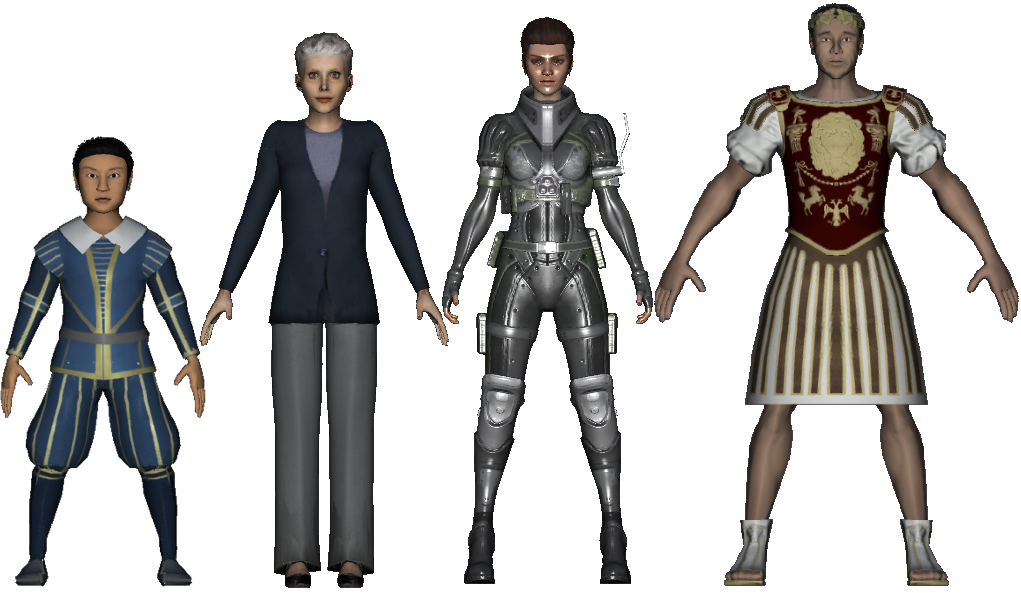
In addition to making it possible for students to engage in play as research, the process of creating the new Scriptmaker spurred innovations that ultimately influenced Play the Knave’s overall design. For example, as we tried to anticipate how new users would respond to the web-based tool’s interface and what they would need to collaborate effectively with it, we confronted the problem of how to guide novice scriptwriters in timing their karaoke lines. Bloom’s instructions for interns had included a cumbersome process whereby interns would listen to Bloom reading the lines at a slow, medium, or fast pace, and then hand-time their script lines to mimic each pace. This sort of training was hardly replicable for public users, and so we reverse-engineered the scripts that had been produced using Bloom’s method to calculate the average number of characters per second for scripts at each speed. With this algorithm on board, the new Scriptmaker could automatically time the lines as the user typed words into a text box. Different versions of the scene could then be quickly generated and customized by clicking the reading-speed selection box or using a slider for more granular alternatives, such as “slow-medium.”
As students in Bloom’s classes used the new Scriptmaker, they helped us discover other new features. For instance, we realized that students needed to be able to print out the texts they had created so that they could rehearse scenes without the game interface. Thus, the new Scriptmaker included the option to create a TXT version of the scene, a feature that turned out to be immensely helpful to teachers, who often want students to read, mark up, and discuss an edited scene before or after experiencing it via Play the Knave. Of course, these new changes made it even easier for interns to playtest and edit scenes in the game—and they reshaped the interns’ conversations about editing and performance. Ultimately, we reworked all the scenes, feeding them back through Scriptmaker’s timing algorithm so that the scene pacing would be consistent across the entire game.
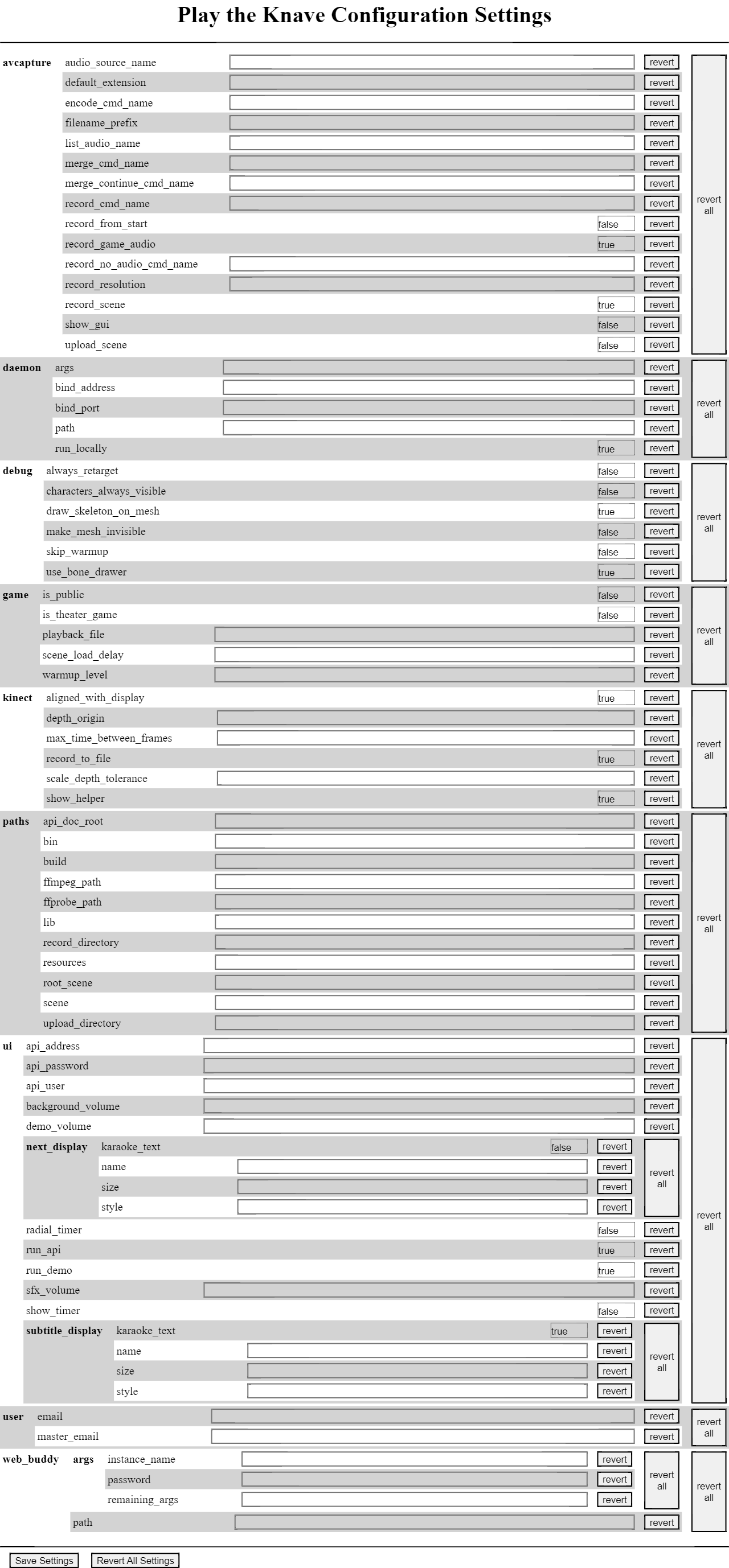
Seeing how users at public installations interacted with the karaoke lines led to further improvisations with line display. For instance, since each installation site had its own hardware for displaying the game—with varying sizes of television monitors and an assortment of projectors—we needed an efficient way to adjust the font size of the karaoke script for different display devices. So, we built this function into the software. Some installation sites were happy to have us record the scenes for sharing with players and for our own research, but for others this was not possible. So, we added a toggle to switch the game’s recording function on and off. Our public collaborators inspired us to experiment with different colors for karaoke lines as well, because it became clear that color-blind players could not distinguish red and green tones easily, and that some lines would not display crisply on certain in-game stage backgrounds depending on the ambient lighting conditions.
Perhaps the most impactful decisions that resulted from installations related to the design of our visual cues for the karaoke timer. We had always known that players needed some visual cue to know how much time was available to read each karaoke screen. Otherwise, they might not complete the line before it disappeared or they might recite it too quickly, leaving an awkwardly long pause as they waited for the next line to appear. But we were reluctant to replicate the “bouncing ball” typical of singing karaoke interfaces because we wanted our players to have some freedom in how they articulated the words on screen. In Shakespeare performance, like any drama performance, how long an actor spends on a particular word and where they place pauses can radically influence the text’s meaning.
By way of compromise, our first versions of the game included a small, pie-shaped countdown timer on the left-hand side of the screen. Public installations quickly revealed that players often ignored this timer. It turned out that reading Shakespeare aloud in front of an audience while trying to move an avatar around on screen entails a tremendous cognitive load, especially for people less familiar with Shakespeare, and the little timer image simply did not make it into the horizon of focus for most players.[31] We experimented with color-coding the timer—it would start to turn red as time for the line was running out—but that, too, failed to convey the critical information in a way players could handle. So, ultimately, we decided to make the karaoke text itself change color to show the progression of time. Players could and did read at whatever pace they wanted—sometimes not finishing the line in time, more often reading too fast—but at least they knew the benchmark, and, if they wanted a more seamless performance, could adjust their reading pace accordingly for future lines. Indeed, this was one of many ways that the game invited players to approach gameplay as a collaboration with the digital system. Although the system could offer players the choice between three reading speeds, once selected, the speed was set. Players had to take their cues from the screen and adjust their pace accordingly if they did not want the performance to come across as awkward. Some of the most engaging and pedagogically productive performances occurred when players had to improvise words or actions to fill in awkward silences if they had recited too quickly.
Our installations exhibited the ways players were entangled with our software and hardware in much the way we as the game’s primary designers were. As Anne Balsamo suggests, members of the public, the end-users of many digital projects, collaboratively produce knowledge through their interactions with technologies in much the way designers do: “technologies simultaneously establish rules, constraints, and contexts within which emerge a creative and unpredictable improvisation, expressing something not previously known to any of the participants.”[32] Although players may not have seen themselves as makers, they and the technical object with which they played were “interrelated and codependent,” participants in the kind of dynamic system that Joanna Drucker describes as key to “speculative computing.”[33] Our players, like us, were involved in what Andrew Pickering calls “a process of tuning” that “works both ways, on human as well as nonhuman agency. Just as the material contours and performativity of new machines have to be found out in the real time of practice, so too do the human skills, gestures, and practices that will envelop them.”[34] Like us, our players engaged in a “dance of agency” as they interacted with our game’s hardware, and as it interacted with them. When players encountered what felt like resistance on the part of the machine, they accommodated through “the human frame of gestures and social relations.”[35] Our team similarly accommodated, rethinking our research questions, revising our goals and intentions. As they played, we played, which altered the way they played, and thus how we played—a cycle that will only end when the game itself is no longer played at all.
“Making practice on the times” | From STEAM to THAMES
In using this book to document the knowledge generated by our capacious collaboratory, we are building on feminist digital humanities work, STS studies of co-production and actor-networks, and performance studies scholarship about embodied practice as a form of research. Ben Spatz argues that what needs to be documented in Practice as Research (PaR) projects is not the “art” practice itself but the knowledge gained through these practices, or what he calls “technique.”[36] Similarly, our goal in this second act has been less to capture events of gameplay or game development than to highlight the transmissible knowledge that structured them. It may be easier to see how technique functions in embodied practices like the ones Spatz discusses in What a Body Can Do—yoga, martial arts, acting—but while the techniques developed by players of Play the Knave or by our team as creators of the game may not seem, at first glance, to be transmissible or applicable to other contexts besides this very particular ludic engagement, we would maintain that they most certainly are. What players discover through their embodied engagement with the Kinect system in the game and what we discovered as a team through our development of Play the Knave is the playful give and take between and among humans and the technical objects they encounter. That knowledge, whether tacit or explicit, is certainly transmissible in a 21st century world where humans constantly use digital technology or are used by it.
But what is gained by framing our project in terms of PaR methodology, particularly given the array of terms that digital humanists have devised to describe the intersections between making and theorizing? Matt Ratto’s “critical making” similarly is invested in “the reconnection of two modes of engagement with the world that are typically held separate: critical thinking, traditionally understood as conceptually and linguistically based, and physical ‘making,’ goal-based material work.”[37] Although critical making foregrounds physical objects more predominantly than PaR, which focuses more on embodiment, it shares with PaR a de-emphasis on a final creation. As Ratto puts it, “the ultimate goal of critical making experiences is not the evocative or pedagogical object intended to be experienced by others, but rather the creation of novel understandings by the makers themselves.” It is the latter that the maker is most interested in sharing with a public. Jentery Sayers and colleagues, in their discussion of physical computing and desktop fabrication, establish “the practice of making things” as being perfectly at home in humanities research, since making “encourages creative speculation and critical conjecture” and dwells in the space of ‘what if . . .?’”[38]
These DH ways of conceptualizing the relationship between theory and practice are useful but limited. For digital humanists, “making” is not inherently a critical praxis; making must be infused with thinking and critique for it to count. Ratto’s critical making, where “critical” is the modifier that imbues “making” with meaning, is a good example, as is Anne Burdick and colleagues’ “thinking-through-practice.”[39] By contrast, in PaR, practice is the site of critical thought, as opposed to what makes thought possible. PaR thus also doesn’t need adjectives like “iterative prototyping” or “generative humanities” because it inherently emphasizes imperfectness, the trial-and-error nature of making. It is practice, and practice, like play, is never complete or final.[40]
But there is more at stake than semantics. Part of our aim is to extend the use of PaR methodologies beyond theater and performing arts and into gaming so that we can highlight the connection between the arts and the humanities, and between both of these and the STEM fields that currently monopolize the discourse around laboratory research. Over the last decade especially, PaR has become significantly more accepted in academic institutions in the U.S. and across the world, but it has been institutionalized primarily in arts-based fields. The university where we began our project, for instance, offers an interdisciplinary Ph.D. in Performance Studies with a PaR track, but students who enter the program and the faculty who teach in it are primarily focused on the performing arts, especially dance, music, and theater. This greater respect for PaR in the wider field of performing arts is itself an important development for PaR, as Robin Nelson details in Practice as Research in the Arts. In 2013, when that book was published, theories of and programs in PaR tended to neglect the performing arts, focusing primarily on the visual arts.[41] Although the intervening decade has seen significantly more uptake of PaR methods in relation to theater, dance, and other performing arts, there is still plenty of resistance to integrating theory and practice in performing arts disciplines. The professionalization of the performing arts, evinced among other things by the rise of MFA programs in theater and dance, has continued to perpetuate divisions between scholars and practitioners. And there are surprisingly few Ph.D. programs in the United States that offer a PaR track in performing arts disciplines.
One solution may be to keep advancing the rigor of PaR as a performance studies research methodology, but we would maintain that another solution is to continue arguing for the applicability of PaR to non-arts disciplines. The “P” in PaR has sometimes been conscripted to mean “performance” instead of “practice,” thereby unnecessarily and unfortunately narrowing the applicability of multimodal, embodied, practice-based research. Perhaps paradoxically, one way to make PaR in the arts more comprehensible to institutions of higher education may be to expand beyond the context of the arts, advocating for PaR as a methodology for the humanities. A more expansive tent for PaR work would benefit humanists and artists alike.
At the very least, conceiving of critical technology projects in terms of PaR would help connect the performing arts to the digital humanities. There are conceptual as well as institutional reasons to secure such a connection. Although the methods of PaR and DH overlap considerably, PaR’s standing in the academy is far less secure than that of the digital humanities, which is arguably the most well-funded and supported of humanities initiatives on many campuses. One reason there may be less resistance to practice-based research methods in the digital humanities compared to the arts is that digital tools and projects are not held up to the same aesthetic standards as arts projects. Developed by scholars who are grounded in and trained in the humanities and rarely in the arts, DH projects are expected to exist in a continual state until someone stops developing them, and the projects may be set before users/audiences at multiple stages in their development, well before they look pretty. Prototyping and serial prototyping are expected of all DH projects, and some have argued that prototypes are sufficient as academic research, as thought experiments or rhetorical exercises.[42] DH projects are expected to be used to create knowledge, whether by an end-user or by the project makers themselves. Theories of PaR have much to gain from the DH example of critical making, and vice versa.
Play the Knave helps to illustrate these connections between research methods in the arts and the humanities because the project, like Shakespearean drama itself, occupies a middle ground between the arts and the humanities, straddling both and belonging exclusively to neither. Although Play the Knave is centrally a project about theatrical performance, with users making theater when they play, theater-making is not an end in itself but a means to producing knowledge about the ontology of theater, about text–performance relations, about spectatorship, and a host of other subjects (e.g., editorial practice, gender and embodiment, disability and performance).
To foreground these critical issues, our team has repeatedly prioritized the interactivity of the software over aesthetic beauty. Because we use a low-cost motion-capture camera—a function of our interests in reaching more players more easily—the mapping of performance-capture data from human players onto the avatars is noisy. When the avatars are humanoids, the result can be grotesque visuals: a head folding into a shoulder, an arm jutting out to an unnatural 200-degree turn at the elbow, and so forth. As we will discuss in Act V, the glitchiness of our avatars turned out to be an incredible opportunity for us to pursue research questions about digital embodiment. But we did not realize this until much later in the design process. Early on, as we debated ways of dealing with what many users cited as a “problem” with our low-grade graphics, one colleague offered the suggestion of using less realistic avatars. The logic was that if the avatars were, for instance, blobs of color or different shapes, then imprecise motion-capture data would not be as noticeable on the screen. Indeed, there are some wonderful artistic works that use a similar technique.[43] But our team resisted giving up humanoids, as we remained committed to representing a recognizable theatrical scene on screen, one that could mirror back, however imperfectly, the theatrical scene of the room where the game was being played.
In other words, if we wanted our players to have a deeper, humanistic understanding of Shakespeare and theater, then we needed to set aside traditional values of theater as an art form. Our digital actors would never sound or look anything like today’s great Shakespeareans of the stage. This was not a game that would result in the creation of “good” theater; it was a game that would enable users to understand Shakespearean theater, embodied performance, and digital culture through the act of making, or rather, playing with, theater. What we found time and time again is that no matter how hard players attempt to create an aesthetically satisfying performance, the system intervenes in and disrupts their artistic aims. Players simply have to experiment with new ways of delivering lines and moving around the physical stage, because they cannot control the look of the virtual stage. They continuously adjust as the screen and the audience in the room give them feedback about their performance. Like those of our research team, our players’ collaborations—with the game, with each other—represent a form of play as research.
Those who take Practice as Research seriously and wish to advocate for it as a rigorous academic methodology may object to this idea of gamers as undertaking PaR simply through the act of play. To be sure, it was not always easy to know what players were getting out of the experience, particularly in public installation contexts, where we did not often have the opportunity to interview everyone who played. However, when we brought the game into classrooms or conducted user studies, having players fill out surveys to offer critical reflection on their experience playing or watching others play, it became very clear that the game was a knowledge-generating device.[44] When engaged in gameplay, Play the Knave participants were far less likely to see themselves as artists than as thinkers: about digital objects, about theater, about Shakespeare, about their own bodies, and about themes and ideas that arose from the particular scenes they were performing in the game.
Our point here is not to exclude or even bracket the arts, but to underscore the fruitfulness of combining the arts with the humanities and the sciences, and of using arts-based PaR methods for postdisciplinary research inquiry. As we underscore how concepts from theater arts and performance undergird digital humanities and technoscientific research, we simultaneously validate experimental methods of research from theater and performance studies by demonstrating their ongoing and productive use in other fields, like DH and STEM, where they have encountered less suspicion. At stake is a recalibration of the relationship between the humanities, the arts, and the STEM disciplines where experimental practice is widespread and accepted.
There is as much to gain for the humanities as there is for the arts in this recalibration. The last decade has seen growing interest in integrating the arts into STEM, as is evident in the STEAM movement, which accommodates the A for arts. The arts, STEAM advocates argue, infuse STEM work with creativity and imagination, thereby spurring innovation. Alas, the humanities have been marginalized in these efforts. However, as Shakespeare’s dramas comfortably straddle literary studies and theatrical performance, they pave the way for a more inclusive intellectual landscape. This wider intellectual landscape requires an acronym that foregrounds the humanities, as well: neither STEM nor STEAM, but THAMES—fittingly, none other than the famous river in London across which thousands rowed to attend performances of Shakespeare’s plays in the sixteenth and seventeenth centuries.[45] Like the mischievous plotters of The Merry Wives of Windsor, who playfully teach Falstaff a lesson by dressing him in women’s clothes and putting him into a basket before he is unceremoniously “thrown in the Thames” (3.5.5), we turn to THAMES as a potent yet playful symbol—in this case, for the vital role of the humanities and arts in innovative STEM research.
What’s in a name? Quite a lot in this case. If the humanities are to be integrated into STEAM, they cannot be simply squeezed in like Falstaff into his basket, as would be implied by one National Endowment for the Humanities proposal of the acronym STEHAM.[46] Our proposed acronym would reorder the letters so that H(umanities) are the glue that binds T(echnology) to the A(rts), all of which, together, help make possible innovations in M(ath), E(ngineering), and S(cience). THAMES research is not limited to Shakespeare, of course, but, as we discovered through our research process, Shakespeare offers an ideal site for unpacking its potential. We could all learn something about experimental research if we changed our costumes, tried out some new technologies of transport, and allowed ourselves to be thrown in the THAMES.
M. Brown, “Kinect Hacks Already Yielding Impressive Results.”
M. Brown, “Kinect Hacks Already Yielding Impressive Results.”
Sawyer, Group Genius.
Sawyer, Group Genius.
For more information of the First Folio Tour, see “About the First Folio Tour,” Folger Shakespeare Library, October 15, 2015, https://www.folger.edu/about-the-first-folio-tour; archived at the Internet Archive’s Wayback Machine, https://web.archive.org/web/20151015225509/https://www.folger.edu/about-the-first-folio-tour.
Sawyer, Group Genius.
Lane, The Big Humanities, 83.
Lane, The Big Humanities, 83.
Lane, The Big Humanities, 83.
M. Brown, “Kinect Hacks Already Yielding Impressive Results.”
M. Brown, “Kinect Hacks Already Yielding Impressive Results.”
Grotowski, Towards a Poor Theater, 19.
M. Brown, “Kinect Hacks Already Yielding Impressive Results.”
M. Brown, “Kinect Hacks Already Yielding Impressive Results.”
M. Brown, “Kinect Hacks Already Yielding Impressive Results.”
Turner, The English Renaissance Stage, 26.
Turner, The English Renaissance Stage, 26.
Turner, The English Renaissance Stage, 26.
Harkness, The Jewel House; Rankin, Panaceia’s Daughters; Ray, Daughters of Alchemy; and P. Smith, The Body of the Artisan. On the furnace as a definitive feature of a “laboratory” prior to the seventeenth century, see B. Brown, A History of the Theater Laboratory.
Harkness, The Jewel House; Rankin, Panaceia’s Daughters; Ray, Daughters of Alchemy; and P. Smith, The Body of the Artisan. On the furnace as a definitive feature of a “laboratory” prior to the seventeenth century, see B. Brown, A History of the Theater Laboratory.
See Bloom, Gaming the Stage; and Bishop, Bloom, and Lin, eds., Games and Theater in Shakespeare’s England.
Sawyer, Group Genius.
Grotowski, Towards a Poor Theater, 19.
M. Brown, “Kinect Hacks Already Yielding Impressive Results.”
On the challenges of designing reading interfaces that provide access to Shakespeare while mediating and managing cognitive load, see Werier, “Reading Shakespeare.”
The original Flash-based version of Make a Pumpkin was available at “Make a Pumpkin!,” ABCya, 2007, http://www.abcya.com/make_a_pumpkin.htm. After Adobe discontinued development of Flash in 2017 and announced that support for Flash Player would end in December 2020, ABCya rebuilt the game, and a new version was launched in October 2020. See “Make a Pumpkin,” ABCya, 2020, <a href="https://www.abcya.com/games/make_a_pumpkin>https://www.abcya.com/games/make_a_pumpkin</a>.
See Bloom and Bates, “Play the Learn,” which discusses initial findings from a larger study of Play the Knave’s impact on student learning in K-16 classrooms in the U.S. and secondary schools in South Africa. This research involving human subjects has been approved by IRB in the U.S. and by the Human Sciences Research Council in South Africa.
See Bloom and Bates, “Play the Learn,” which discusses initial findings from a larger study of Play the Knave’s impact on student learning in K-16 classrooms in the U.S. and secondary schools in South Africa. This research involving human subjects has been approved by IRB in the U.S. and by the Human Sciences Research Council in South Africa.
See Bloom and Bates, “Play the Learn,” which discusses initial findings from a larger study of Play the Knave’s impact on student learning in K-16 classrooms in the U.S. and secondary schools in South Africa. This research involving human subjects has been approved by IRB in the U.S. and by the Human Sciences Research Council in South Africa.
Lev Manovich’s off-the-cuff comment at a conference that “a prototype is a theory” has been advanced and built upon by others. Alan Galey and Stan Reucker, in “How a Prototype Argues,” maintain that because a prototype conveys an argument, digital humanists need not necessarily go beyond making experimental prototypes in their research process. Anne Burdick and colleagues also emphasize the ways versioning of digital projects leads to innovation: “iterative versioning of digital projects fosters experimentation, risk-taking, redefinition, and sometimes failure”; Burdick et al., Digital_Humanities, 21. Stephen Ramsay and Geoffrey Rockwell, in “Developing Things,” point to the problem of how a digital object can convey its argument if the object is meant to be a tool for others to use. If the tool is doing its proper job, it will be transparent; only when it breaks down might its theoretical argument be visible—which is why prototypes are so good at articulating theories.
Lev Manovich’s off-the-cuff comment at a conference that “a prototype is a theory” has been advanced and built upon by others. Alan Galey and Stan Reucker, in “How a Prototype Argues,” maintain that because a prototype conveys an argument, digital humanists need not necessarily go beyond making experimental prototypes in their research process. Anne Burdick and colleagues also emphasize the ways versioning of digital projects leads to innovation: “iterative versioning of digital projects fosters experimentation, risk-taking, redefinition, and sometimes failure”; Burdick et al., Digital_Humanities, 21. Stephen Ramsay and Geoffrey Rockwell, in “Developing Things,” point to the problem of how a digital object can convey its argument if the object is meant to be a tool for others to use. If the tool is doing its proper job, it will be transparent; only when it breaks down might its theoretical argument be visible—which is why prototypes are so good at articulating theories.
On the challenges of designing reading interfaces that provide access to Shakespeare while mediating and managing cognitive load, see Werier, “Reading Shakespeare.”
On the challenges of designing reading interfaces that provide access to Shakespeare while mediating and managing cognitive load, see Werier, “Reading Shakespeare.”
On the challenges of designing reading interfaces that provide access to Shakespeare while mediating and managing cognitive load, see Werier, “Reading Shakespeare.”
On the challenges of designing reading interfaces that provide access to Shakespeare while mediating and managing cognitive load, see Werier, “Reading Shakespeare.”
Grotowski, Towards a Poor Theater, 42.
On the challenges of designing reading interfaces that provide access to Shakespeare while mediating and managing cognitive load, see Werier, “Reading Shakespeare.”
On the challenges of designing reading interfaces that provide access to Shakespeare while mediating and managing cognitive load, see Werier, “Reading Shakespeare.”
On the challenges of designing reading interfaces that provide access to Shakespeare while mediating and managing cognitive load, see Werier, “Reading Shakespeare.”
On the challenges of designing reading interfaces that provide access to Shakespeare while mediating and managing cognitive load, see Werier, “Reading Shakespeare.”
On the challenges of designing reading interfaces that provide access to Shakespeare while mediating and managing cognitive load, see Werier, “Reading Shakespeare.”
On the challenges of designing reading interfaces that provide access to Shakespeare while mediating and managing cognitive load, see Werier, “Reading Shakespeare.”
On this installation, see “Play the Knave: An Interactive Shakespeare Video Game,” Shakespeare 400 Chicago, 2016, https://www.shakespeare400chicago.com/events.html.
On this installation, see “Play the Knave: An Interactive Shakespeare Video Game,” Shakespeare 400 Chicago, 2016, https://www.shakespeare400chicago.com/events.html.
Grotowski, Towards a Poor Theater, 42.
See Bloom, Gaming the Stage; and Bishop, Bloom, and Lin, eds., Games and Theater in Shakespeare’s England.
